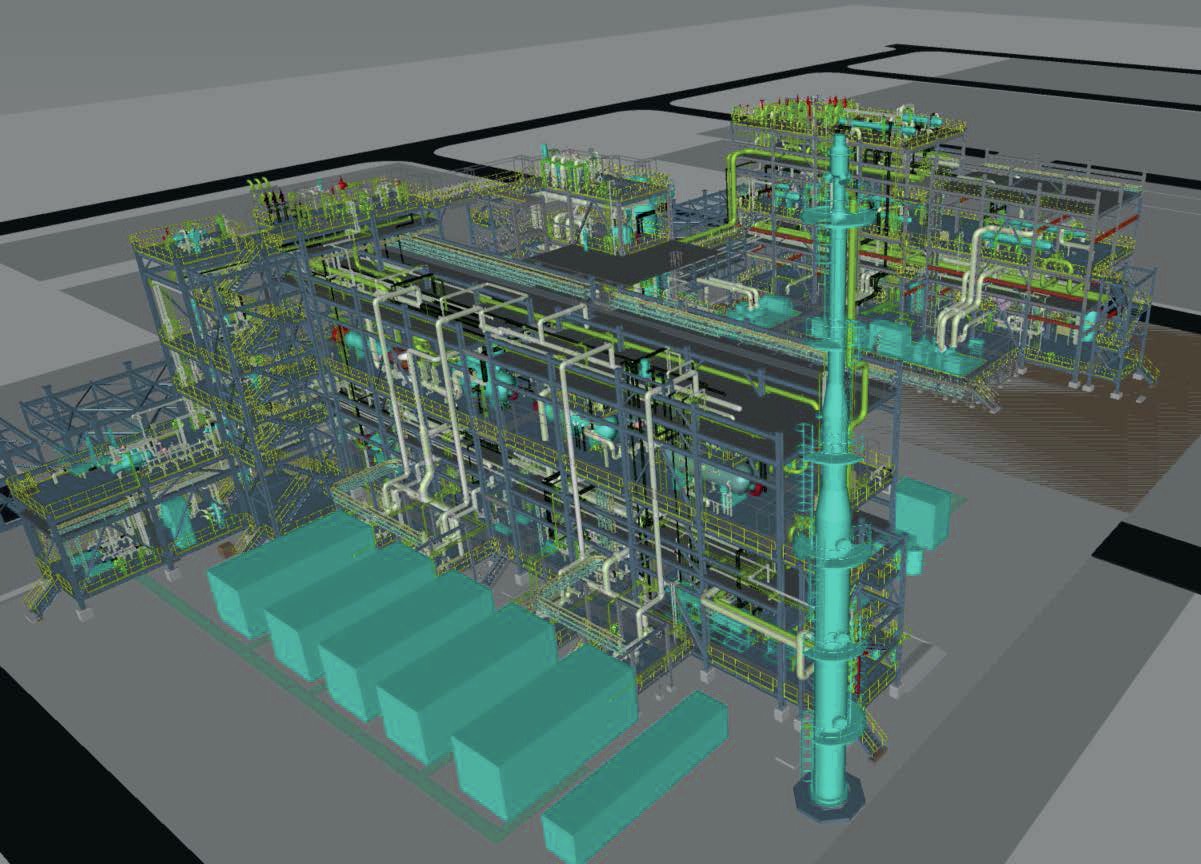Nitrogen+Syngas 385 Sept-Oct 2023

30 September 2023
Problem No. 69: Impact of ammonia catalyst fines on urea plant
Rohit Khurana and Umesh Jainker of KBR presented a technical paper on this topic during the 2013 Asian Nitrogen + Syngas Conference. It can be found in the UreaKnowHow.com E-Library with the title: ”Replacing ammonia plant catalyst with maximum efficiency and lowest cost”. The paper addresses the importance of de-dusting catalyst beds before commissioning and the serious impacts on the plant if not performed thoroughly. Many ammonia plants have faced problems related to the plugging of exchangers, pipe choking, pressure drop increase of the downstream catalyst beds and separators or foaming in the CO₂ removal section which could be caused by the presence of catalyst dust. Most of these problems have led to either decrease in the efficiency of the plant or operation at lower throughputs. The paper presents the critical steps and procedures for proper dedusting of the catalyst beds before commissioning. In addition, the foaming problem in the CO₂ removal section associated with catalyst dust is discussed signifying the importance of cleaning the CO₂ removal system and solution. The role of filters in the CO₂ removal section was also emphasised.

Furthermore, catalyst dust can also create problems in the urea like scaling of the HP stripper tubes and on the top tubesheet of the HP stripper (refer to picture), leading to clogging of the liquid divider holes, which is very critical in HP strippers with 25-22-2 tubes as it can lead to active corrosion and tube rupture. In the low-pressure rectifier, catalyst dust can also cause fouling of the heater and even of the internals of the rectifier column itself.
Nour of El Delta Fertilizers in Egypt kicks off this round table discussion: What problems can be expected if ammonia catalyst fines pass from the ammonia section to the high-pressure urea plant? Are there chemical reactions and what are the expected compounds? Is erosion possible with these fines in the liquid dividers of the HP stripper and corrosion? Do these fines cause scale formation on the tube wall and tube sheet in heat exchangers?
Majid Esmaeilzadeh from CCM in Iran replies: Are you sure that the fines are iron oxide? Have you confirmed it by taking a sample and doing lab analysis. From where did you take the sample for analysis?
Nour replies: Yes I am sure, the fines were found in the filter before the ammonia preheater.
Suresh from Nagarjuna Group in India joins the discussion: The problem may be caused by the slip of iron catalyst fines/ catalyst heaps through the ammonia reactor mainly due to failure of the Johnson screen in the ammonia converter basket. Some plants have collected iron catalyst heaps at the HP ammonia feed booster pump suction, so it is better to inspect the screen inside the ammonia converter, but, it is a difficult task.
Girish Prakash of Yara in India shares his valuable experiences: I fully agree with Suresh about the source of iron catalyst fines and in fact we faced the problem around 2001-02. We faced two phenomena at that time: (1) the colour of the urea prills changed to dull white with a tinge of brown colour instead of the normal crystalline white and (2) frequent cavitation problems in the ammonia booster pump (due to choking of strainers).
Waqqar Ahmed of Fauji Fertilizer Company Ltd. In Pakistan also joins the discussion: To cater for this type of problem we have a strainer and filters in the liquid ammonia line before the ammonia receiver vessels in the urea plants.
Nour replies: Thank you for your reply Girish. Did you also notice any effect in the stripper? Did the stripper outlet temperature increase? Did the heat transfer in the first stage of the evaporation section decrease? How long did you continue with catalyst fines fouling?
Les Farbotko (retired) from Incitec Pivot in Australia shares his valuable experiences: We do not have a filter on the ammonia line to our urea plant – it goes straight into the ammonia storage drum, where some seems to settle out on the bottom (behind a raised weir on the pump suction nozzle). I have sometimes worried whether this catalyst dust is in the reduced state and may get hot when exposed to air, but we haven’t seen anything like this, because we usually steam out first, which would oxidise the dust. Similarly, any dust that is carried forward out of the ammonia drum would be oxidised by contact with CO2 and H2O in the reactor or other downstream vessels. Has anyone seen any spontaneous heating of catalyst dust when filters etc. have been opened up? Catalyst dust may also contribute to wear on the packings of the HP NH3 pumps.






